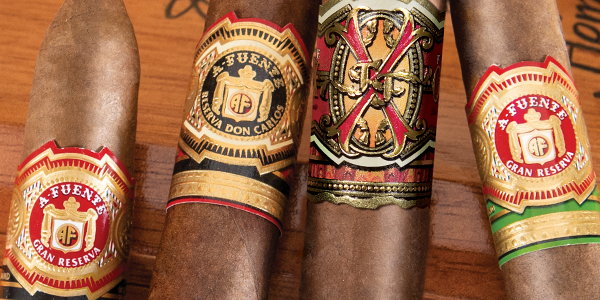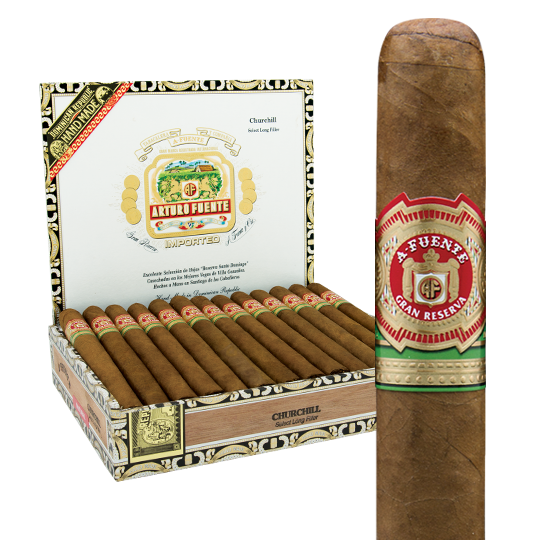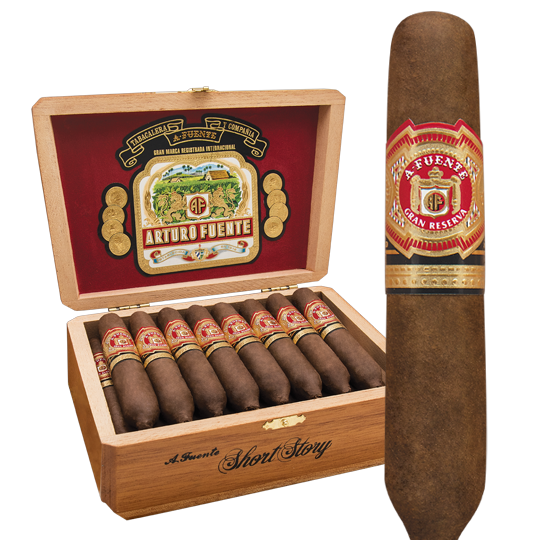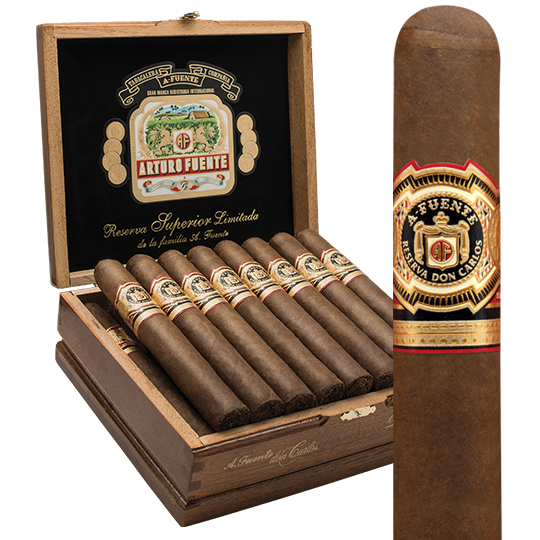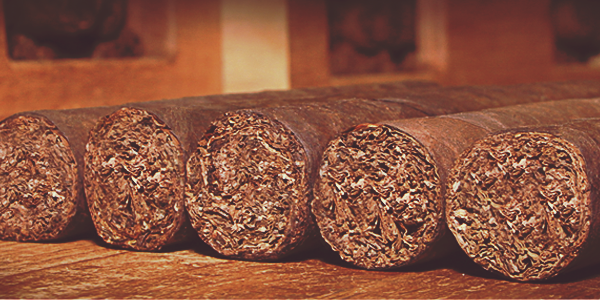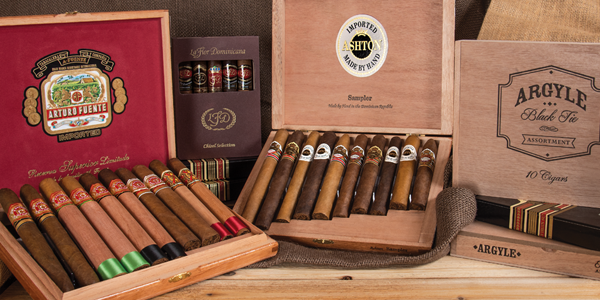Celebrating 100 Years of Arturo Fuente
Sure, sure the Fuente ‘Eye of the Shark’ was named ‘Cigar of the Year’ by Cigar Aficionado for 2017. Yawn. Fuente cigars are always at or near the top of everyone’s list. The BIG news in 2018 came out of ‘Puro Sabor,’ the Nicaraguan cigar festival. Arturo Fuente & Co. (Fuente) is going back to Nicaragua. Fuente had been in Estelí in the 1970s and now is building a factory dubbed ‘Gran Fabrica de Tabacos La Bella y La Bestia’ (The Great Cigar Factory Beauty and the Beast). A fitting name. Fuente cigars are beauties and some contain a little beast in smoking power. In January, the company revealed that it had quietly been growing tobacco in Nicaragua for four years. It’s another milestone in the 106-year history of one of the world’s best cigar companies. Among other accomplishments, Fuente’s introduction in 1995 of the Dominican-grown Fuente Fuente Opus X greatly influenced the tastes of cigar smokers and, as a result, the style of cigars made by non-Cuban brands. Full flavor was on the rise. The cigar also revolutionized the Dominican industry, showing that great wrapper leaf could be grown, in this case, with Cuban seed under shade.

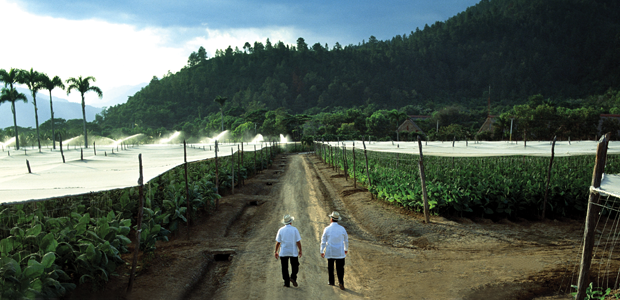

Carlos Fuente Sr. with son Carlos ‘Carlito’ Fuente Jr. visit Chateau de la Fuente, ‘Birthplace of a Dream.’
Fuente operated in Nicaragua until 1978 when the factory burned down in the political upheaval and war the nation was experiencing. The company moved to Santiago, in the Dominican Republic, then a bit of a backwater. That’s where true greatness became a matter of routine. As a cigar smoker in the 21st century, you’ve almost certainly smoked – or wanted to smoke – a cigar made by Fuente. If you haven’t, what the hell are you waiting for? The history of Arturo Fuente and Co. is worth commemorating and celebrating. Fuente has been here for more than 100 years. And Fuente makes some of the world’s finest cigars.
The Arturo Fuente cigar operation began in Tampa, Florida, in 1912 after the founder had emigrated from Cuba. Arturo Fuente was 24 years old. There were more than 200 cigar makers in Tampa at the time. The tobacco came in from Cuba. For 12 years, Fuente made cigars, but production was interrupted by fire. The factory, which employed more than 500, burned to the ground. Production of the Fuente brand would not resume until 1946. The new ‘factory’ was the back porch of the family home in Ybor City. Among the family members rolling cigars, were Carlos and Arturo, Jr., the patriarch’s two sons. The Fuente brand was pretty much a local Tampa cigar through the next decade. Business was tough, and Carlos Fuente took a job as a baker to help financially.
Carlos Fuente, though younger than Arturo, Jr., was the one most interested in the cigar business and his father transferred ownership of the business to Carlos in 1958. Cuban cigars still had most of the market share, but that was about to change. In 1962, the embargo of Cuba meant no more Cuban cigars or tobacco to roll in Tampa. On the other hand, cigar lovers had to find something new – non-Cuban – to smoke.
As Carlos Fuente told Cigar Aficionado, ‘I feel the embargo put everybody level. People had to shop around to find a different taste that they liked.’
Fuente looked for new sources of tobacco, even in Puerto Rico and Colombia. It’s no surprise that the challenge of finding replacement tobacco made some cigar makers great blenders. Others not so much. Fuente, as we know today, was among the best. The other challenges were that it was no longer economical to produce in the US and good torcedores (rollers) were hard to find. Again, Puerto Rico was investigated. So was Mexico. Quality was not good enough. That’s when Nicaragua won Carlos Fuente’s affection. Fuente never announced it had stopped using Cuban leaf. The company had stored enough for three years after the embargo, used specifically for the Arturo Fuente brand.
Carlos Fuente passed away in 2016. He had never wanted to be the biggest cigar maker, just the best.
Robert Levin, owner of Ashton, knew Carlos Fuente for many years. “It’s the end of an era. He was a unique guy, an amazing person,” Levin remembered. “He was a problem solver. He would always come up with a solution no one else would think about.”
The man known widely as ‘Senior,’ left his son Carlos Jr., Carlito, in charge as president of the Fuente Companies. Cynthia Fuente-Suarez, Carlito’s sister, is vice president.
Today, Fuente, having survived fire and hurricanes, produces more than 30 million cigars annually, making Fuente one of the world’s largest cigar companies. Fuente factories in the Dominican Republic roll the Arturo Fuente, Hemingway, Don Carlos and Fuente Fuente Opus X brands. Additionally, Fuente makes cigars for Ashton and Diamond Crown. Fuente is usually among the top three selling premium brands in the US.
The Hemingway line, created in the mid-1980s, was the one that really captured, with distinctive shapes, the imagination of cigar smokers. At the time, you’d find a pyramid in tobacco stores, but not many other shaped cigars, Figurados. Fuente found old cigar molds and created the medium-bodied, super flavorful Hemingway blend. The biggest hit was perhaps a four-inch cigar called the “Short Story.” Fuente’s next hit changed the non-Cuban cigar industry.
After a visiting tobacconist told Senior in 1988 that Fuente didn’t “produce” cigars, but merely “assembled” them from tobacco the company purchased, Fuente was inspired to grow wrapper tobacco in the Dominican Republic, something other companies had tried and failed to do. The Opus X took another seven years to come to fruition after several unsuccessful attempts.
Carlito remembered the challenges. “When it rained, we couldn’t get in or out. My dad had a four-wheel drive—it got stuck. Before you know it the frame of the car was touching the ground. We had to get a John Deere to pull it out. My father had mud up to his knees, and I did too. My father said, ‘Unless you build a road here I’m not coming back again. I’m a cigar maker, I’m not a farmer.’ ”
The problem was solved by building roads and curing barns and gazebos and everything else that eventually became Chateau de la Fuente, perhaps the most attractive tobacco farm ever created. More beautiful still are the cigars produced from the Cuban seed tobacco grown there. In 1994, Cigar Aficionado reviewed and raved about a cigar that was not even on the market yet. The ‘FFOX,’ was a secret project. The demand was stratospheric. When the Opus X launched more than a year later, in November of 1995, it sold out so quickly that the next allotment had to be limited to two cigars per customer. The brand, which originated with seven vitolas, has consistently scored highly in tastings and in 2005, the Fuente Fuente Opus X Double Corona was named cigar of the year by Cigar Aficionado. The Opus X was so successful that Fuente was sued by the ‘Opus One’ winery, a California joint venture between Robert Mondavi Corp. and the French Baron Philippe de Rothschild S.A. After a two-year legal battle, the cigar maker won the right to continue using the brand. Apparently, the court determined a person can fairly easily tell the difference between a cigar and wine.
The Opus X was more a reflection of Carlito’s taste for stronger cigars (though on today’s spectrum the Opus X might be considered a medium-full blend). The Don Carlos line is where Senior’s taste was best represented. Carlito has become a master blender, and his father gave him all the credit for the blends the company made over the past three decades. The Ashton VSG grew out of the strengthening of the flavor profiles to which Carlito is partial, though Fuente tempers the power in the A. Fuente Rosado Sungrown line.
Levin admires Fuente’s blending abilities. “The Fuentes can come up with 50 different blends and they’re all going to be good, and they’re all going to be different.”
The success of the Fuente company is represented in Las Vegas with Casa Fuente, a cigar lounge that sells cigars made only by the company. More significantly perhaps is the Cigar Family Charitable Foundation that Fuente and the J.C. Newman Cigar Co. created to help the poor of the Dominican Republic by putting in clean water facilities and building schools. The foundation is aimed particularly at those in need who live around Chateau de la Fuente.
More Fuentes have entered the family business. Carlito’s daughter Liana is now a fixture as vice president of brand development. The Fuente website calls Liana the ‘next heiress’ of the company. Fuente also honors its roots. The move back to Nicaragua is a tribute to Carlos Fuente, Senior. Carlito has said his father, for years, would often talk about going back to Nicaragua if he was a younger man. When Carlito realized his father was ill, Carlito sought to fulfill his father’s dream. Senior knew of the plan before he passed away. Now, Carlito says, when the factory opens, there are plans to make a Nicaraguan Don Carlos.
We celebrate Fuente’s history. Other cigar companies have been around 100 years or more, but the original family ownership remains in place in very few of them. In these days of mergers and takeovers, keeping the Fuente family cigar business in the Fuente family is something all cigar lovers can celebrate. And we look forward to what the Fuente future brings.

